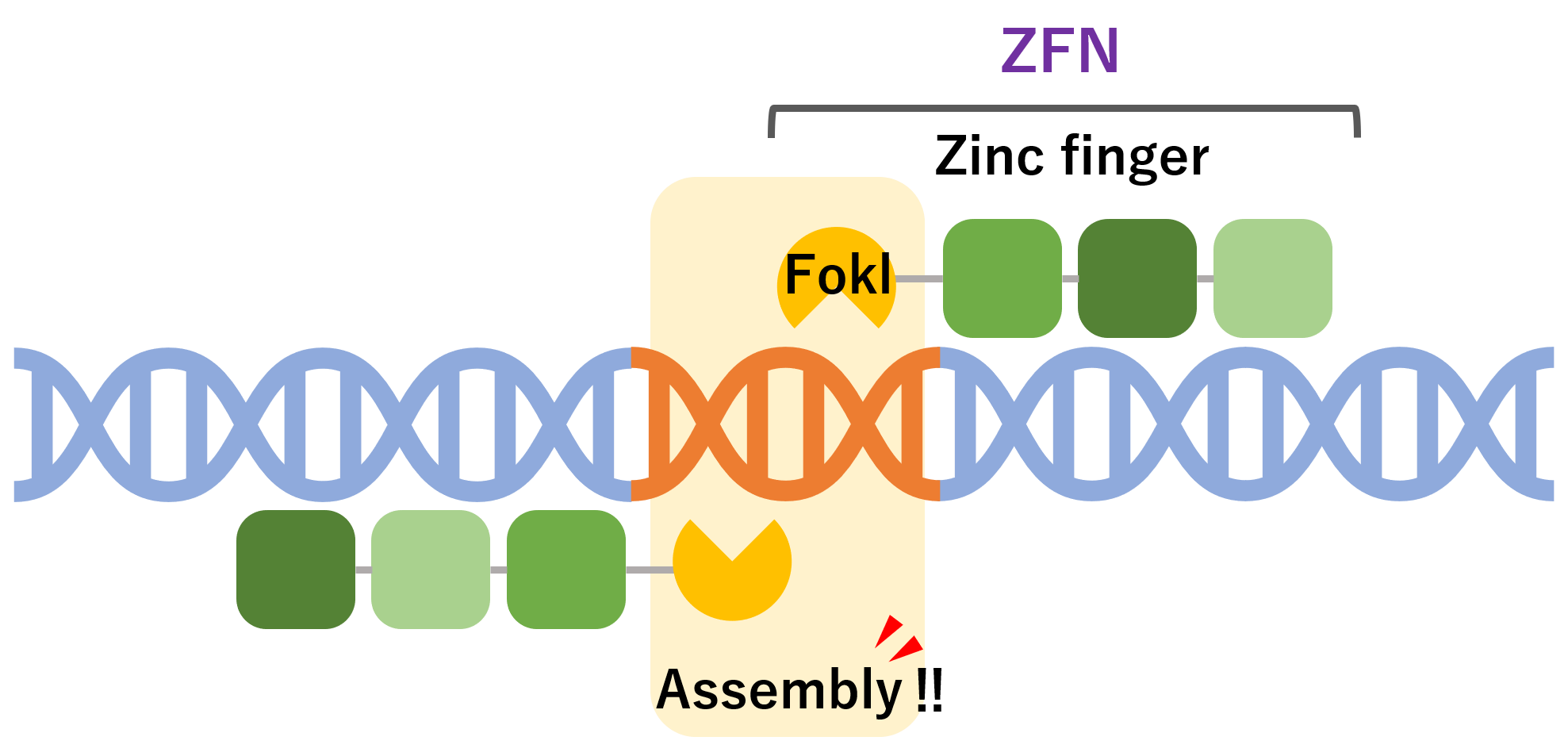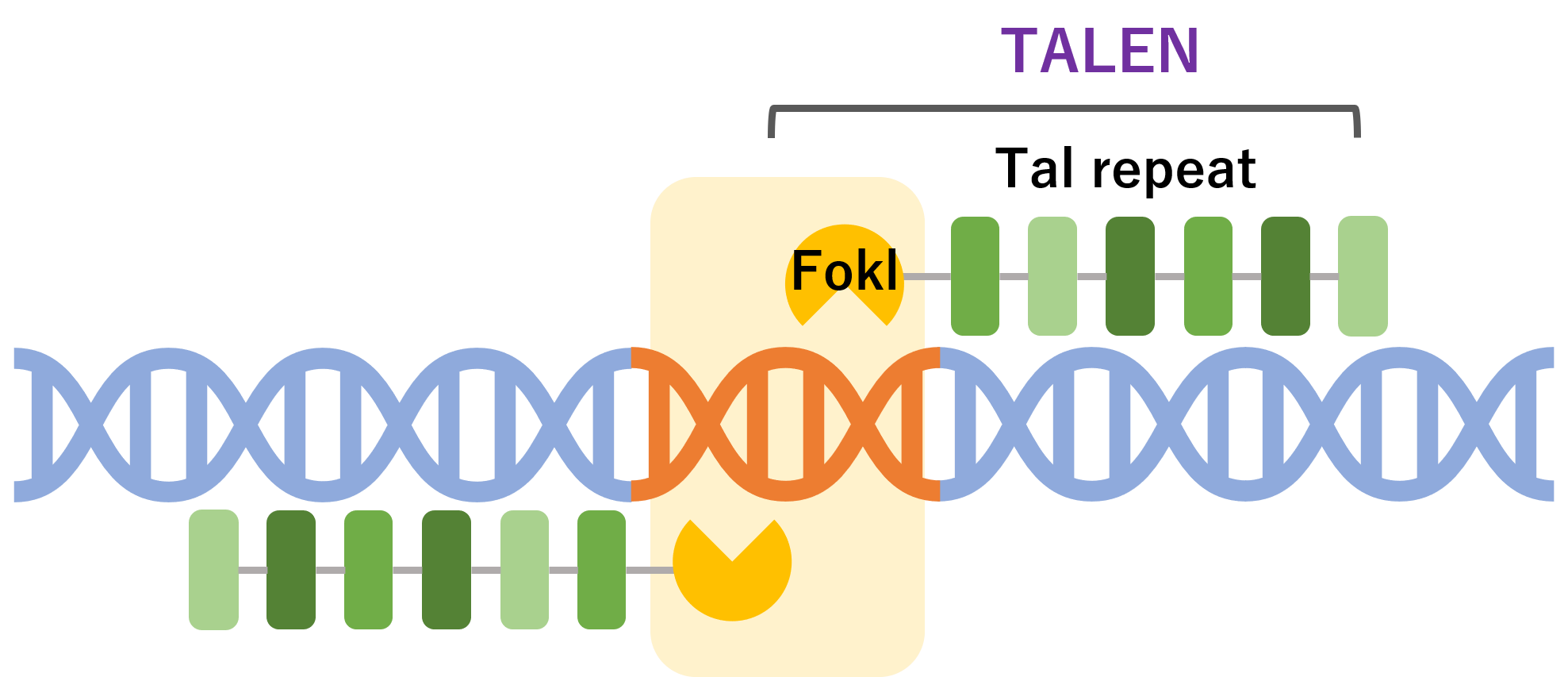Zinc Finger Nuclease (ZFN), the first artificial restriction enzyme
Zinc finger nuclease (ZFN) is the first of the three artificial restriction enzymes developed in 1996, and the first to be used in genome editing in human cells in the mid-2000s. The DNA-binding part of ZFNs is composed of a series of 30 amino acids called "zinc fingers" and a cleavage enzyme called "Fokl".

A single zinc finger is capable of recognizing three bases. This makes it possible to recognize a specific base by changing the type of zinc finger. For example, by combining eight zinc fingers, 24 bases can be recognized. Since a particular sequence of 24 consecutive bases can theoretically appear in only one place in mammals, the target can be manipulated with certainty. Fokl has a property that prevents it from cutting DNA in the wrong place and only cuts when two are aligned on either side of the DNA to cut the desired location.


